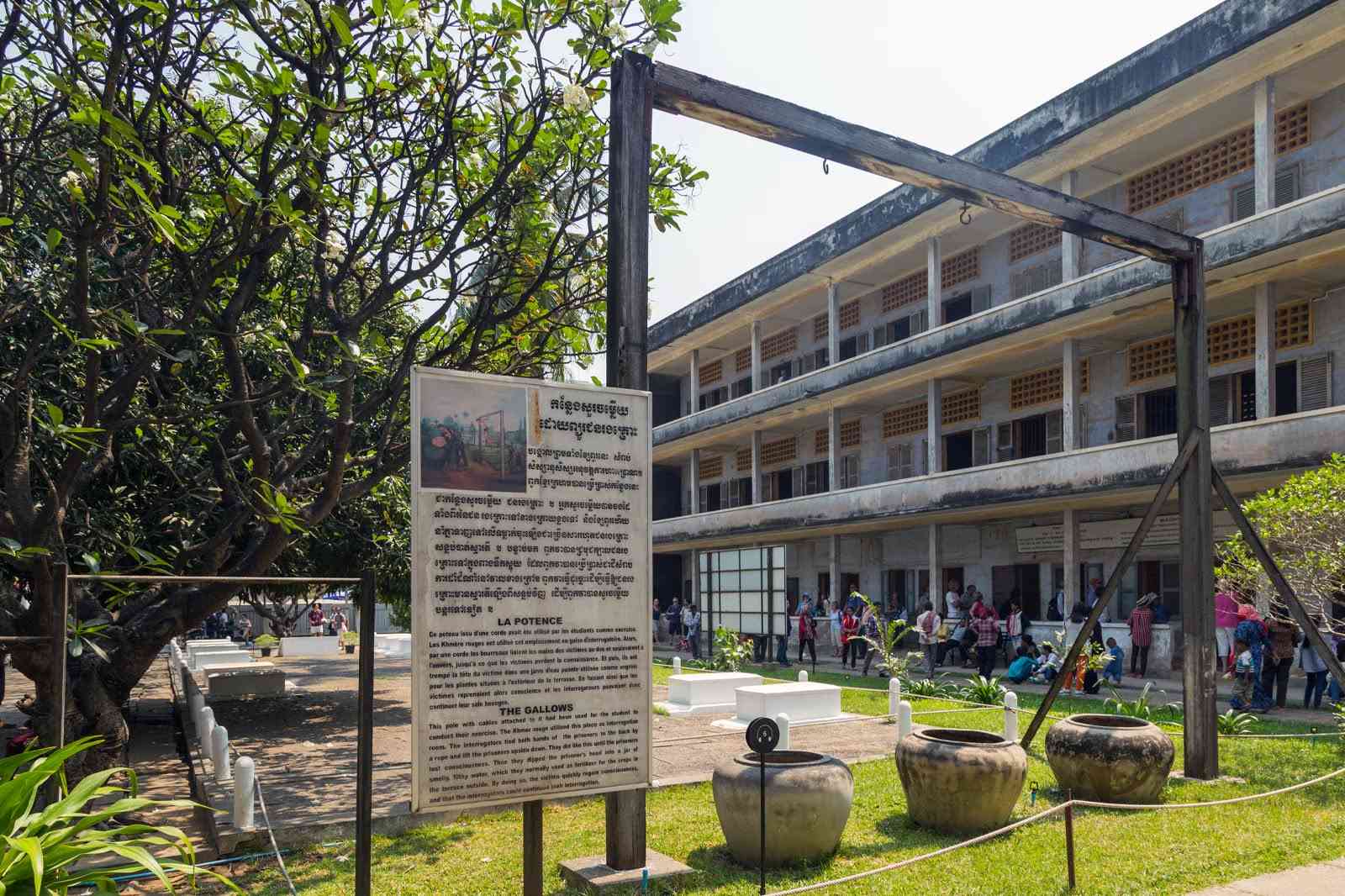NATIONAL MUSEUM
The National Museum, Cambodia’s main cultural history museum, holds the world’s greatest collection of Khmer art.
The museum is rusty red, like a red agate placed on the earth, and was built in 1917 by the French in a Khmer style around a courtyard. There are about 5,000 artefacts on show, including Angkorian era statues, lingas, and other relics, the most notable of which is the original of the Leper King, whose duplicate is on display in Siem Reap’s Terrace of the Leper King, where it was initially unearthed. There are other pieces from subsequent periods on display, as well as an unique exhibition of post-Angkorian Buddha sculptures. Here, visitors may relax and reflect on one of Asia’s most diverse cultures and the museum is open every day from 8:00 a.m. to 5:00 p.m.

THE ROYAL PALACE
The Royal Palace is a Khmer-style Throne Hall that was constructed in 1866 to serve Cambodia’s King and his family. It also functioned as a place for court events and rites, as well as hosting foreign guests. The palace is, above all, a symbol of the Kingdom. The Royal Treasury and the Villa of Napoleon III, built in Egypt in 1866 for the completion of the Suez Canal and later given to the Cambodian king as a gift, are located south of the Throne Hall. The establishment of the Royal Palace in Phnom Penh is a relatively recent event in Khmer and Cambodian history. From AD802 until the early 15th century, the seat of Khmer sovereignty in the region was in Angkor, north of the Great Tonle Sap Lake. After leaving Angkor in the 15th century, the Khmer court first established in Phnom Penh in 1434, where it lingered for several decades, before moving on to Basan, Lovek, and finally Oudong in 1494.

PHSAR THMEI MARKET
The Khmer name for this market is Phsar Thmey which means ‘New Market,’ is a key landmark in the Cambodian capital. Whether you’re a shopper who wants to test your haggling abilities, a visitor who wants to be a part of the busy crowd, or simply want to see the city’s great architectural wonders, the Central Market is a must-see during your visit to the city. Central Market, designed by Desbois and built in the Art Deco style, was the largest of its kind in Asia when it opened in 1937, during the French colonial period. Central Market was renovated with financing from the French Development Agency in order to preserve its distinctive building before reopening to the public in 2011.
Central Market is designed in the style of traditional Southeast Asian architecture, with a massive yellow-painted central dome and four wings leading to massive passageways brimming with shopping stalls. In reality, the main advantage of this bustling market is its well-protected, well-ventilated construction, which allows both sellers and buyers to conduct business without being disturbed by monsoon rain or scorching heat.

TOUL SENG MUSEUM
The Khmer Rouge dictatorship virtually emptied Phnom Penh in the 1970s. This striking exhibit recalls the millions of innocent victims of the “Killing Fields” and is housed in what was once a prison camp. This thought-provoking museum requires a strong stomach, but it is not to be missed.

WAT PHOM
Wat Phnom is the only ‘hill’ in town, perched atop a 27-meter-high tree-covered mound. The first pagoda on this site, according to legend, was built in 1372 to house four Buddha images deposited here by the Mekong River and discovered by Lady Penh. Phnom Penh, or ‘hill of Penh,’ is the city’s name.
Wat Phnom’s shrines are a clever synthesis of various intellectual and religious traditions, ranging from Hindu to Confucian. Confucius’ intricate drawings can be found in Preah Chau’s shrine. Take a trip to the arts and crafts center to see some of the local handicrafts, but keep a look out for obnoxious vendors and beggars along the route. Beyond spiritual amplitude, Phnom Penh’s greatest attraction is brimming with new vigor.


-thumb.jpg)


-thumb.jpg)





-thumb.jpg)
